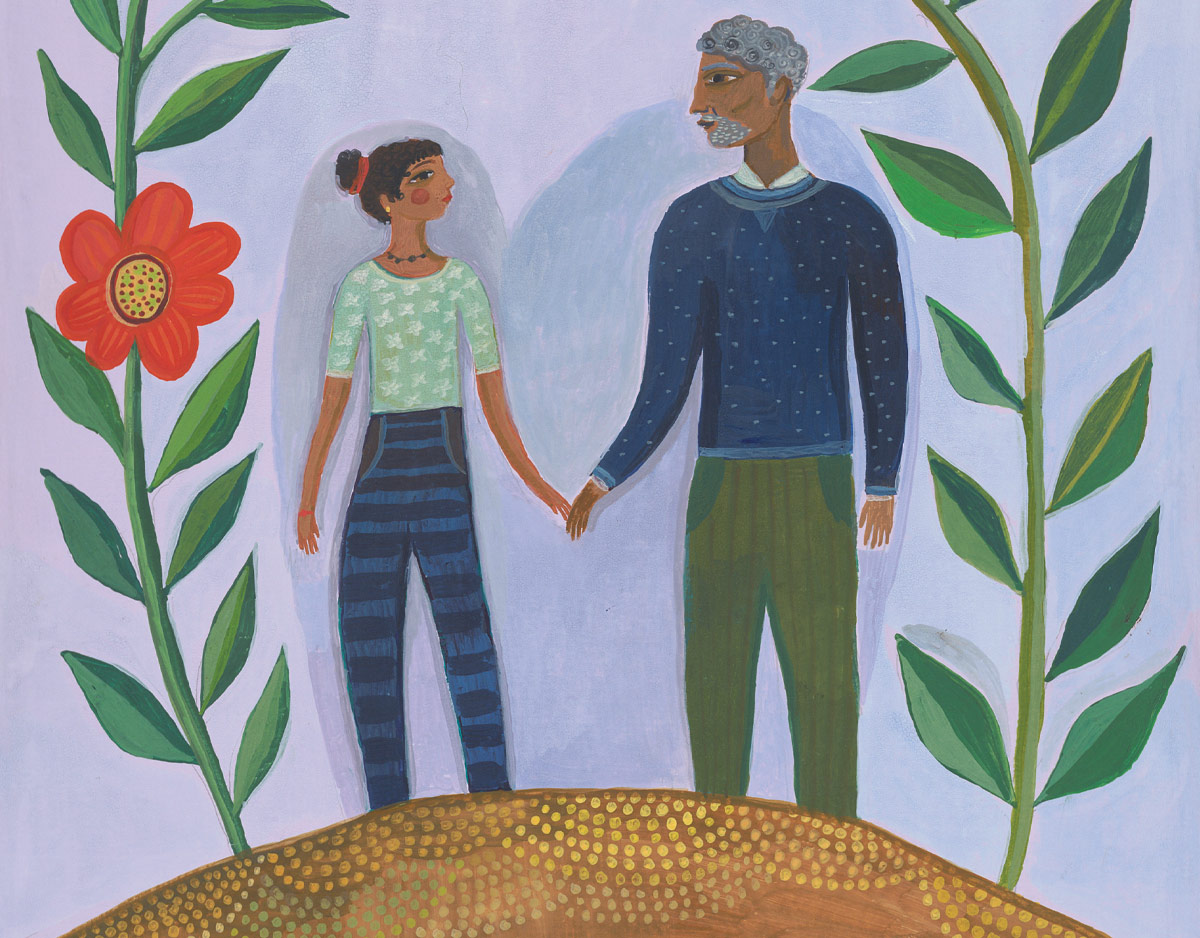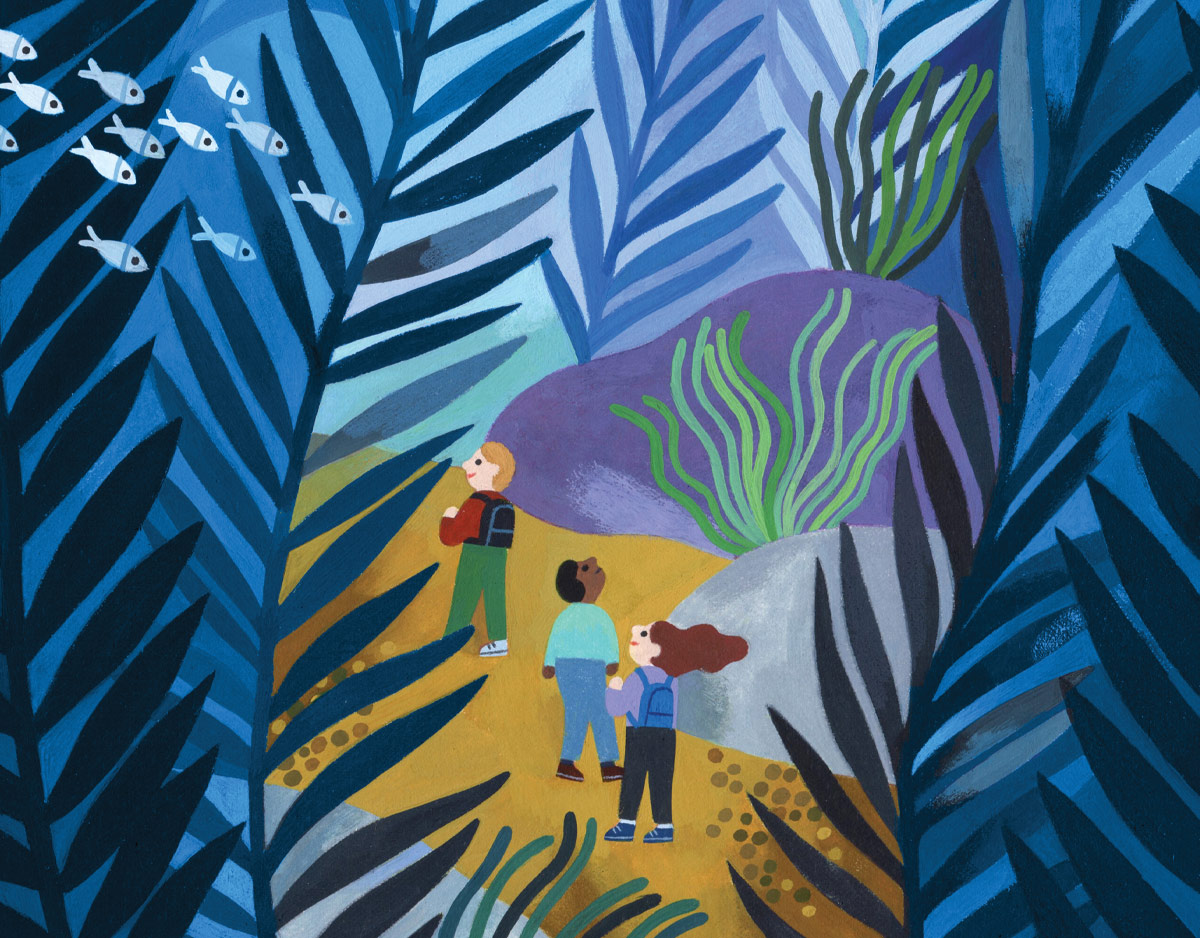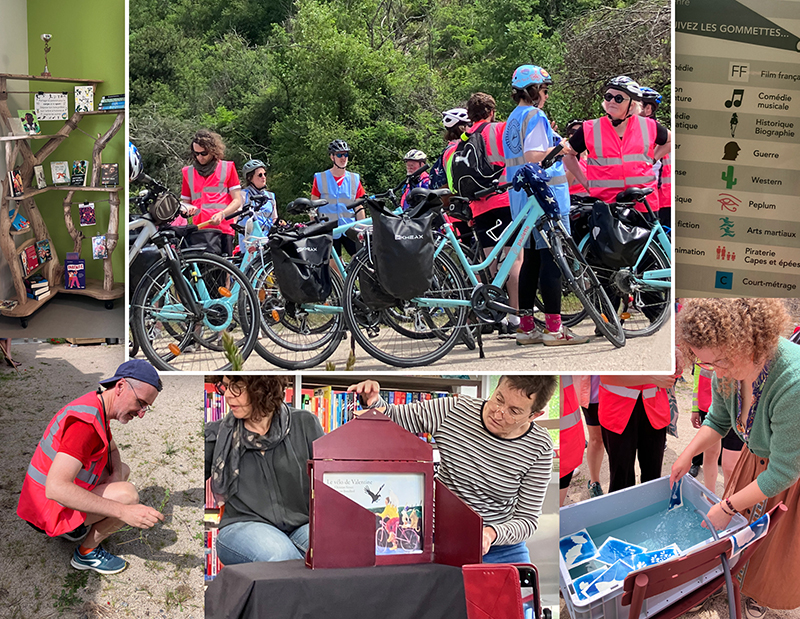Rekindle or Reaffirm Students’ Love of Reading with How to Read a Book

Written by Kwame Alexander and Illustrated by Melissa Sweet
Published by HarperCollins Children’s in 2019
ISBN 9-780062-307811
Grades K and Up
Book Review
Teaming up for the first time, Newbery Medal-winning author Kwame Alexander and two-time Caldecott Honoree Melissa Sweet have crafted a joyous and contemplative ode to reading. With melodious language that celebrates the act of reading, How to Read a Book invites readers to a book party “stacked with all your favorite friends: a picnic of words and sounds in leaps and bounds.” Ripe with sensory details like “the color of sunrise” and “the scent of morning air”, readers will find themselves mesmerized by each word that calls us to slow down and take notice of the power and wonder of reading. With a neon palette perfectly suited for a book party, Melissa Sweet’s bedazzling mixed-media collage- and-watercolor illustrations mirror the anticipation, and awe of reading evoked by Alexander’s words. The book includes creative use of the book’s pages through a gatefold, smaller sized pages that reveal the word “EXPLODE”, and a cut-out to a neon pink moon. These textual surprises further invite readers to linger on each page in a sensory experience that parallels Alexander’s words. Part of a growing collection of books that redefine what books can be, early readers will find themselves wondering how they, too, can read “until the last drop of magic drips from the infinite sky.” Experienced readers will find themselves re-energized and newly appreciative for the powers they have with a book in their hands. Perfect anytime of year, invite students to rekindle or reaffirm their love of reading with How to Read a Book.
Teaching Ideas: Invitations for Your Classroom
How to Read a Book Shared or Interactive Writing. After reading How to Read a Book, create your own class poem with the same title. First, support students to closely read a two-page spread from the book with a partner noticing and naming what Kwame Alexander did as a writer and how they might use a similar technique in there poem. Have students consider what instructions, both literal and figurative, they can give others for how to read a book in a way that celebrates the act of reading. Who do they love to read with? What kinds of books do they think are the most joyful to read? When do they think is the best time to read? Where are their favorite places to read a book? Why is reading so powerful? How can reading change the world? Use this framework to generate ideas and then draft a class poem using shared or interactive writing. Once complete, share the poem with the school community in some way through distribution around the school or by making the poem public such as hanging it as the entrance to the school.
ADVERTISEMENT
ADVERTISEMENT
Book Party Celebration. In the Note from Kwame Alexander at the back of the book, he explains that he wrote this poem in 2010 for World Read Aloud Day, a global literacy event created by the nonprofit, LitWorld. This year World Read Aloud Day is on February 5th, 2020. From its inception, World Read Aloud Day was meant to be a book party for children to bring the power of read alouds and the love of books to everyone. Find the line in the book where Alexander uses the phrase “book party”. Pair How to Read a Book with Sergio Ruzzier’s Fox + Chick: The Party. Engage in a discussion about what kind of book party you could have as a class. Gather ideas and then create a class book party where students choose what they read, who they read with, where they read (around the classroom or school or outside), and when they read (maybe read the day away). As part of your own book party, consider inviting community members to act as guest readers bringing their favorite books to the book party. You may want to have a ribbon cutting that reveals new books for the classroom library or opportunities for students to create their own books in a book making station. Finally, you may want to mark your calendar for this year’s World Read Aloud Day as the designated day for your book party. The ideas for a celebratory book party are limitless.
Intertextuality: Weaving Poems and Stories. In the Note from Melissa Sweet at the back of the book, she explains that she uses two additional texts as part of the collage illustrations in How to Read a Book: Nikki Giovanni’s “Poetry” and the classic children’s book Bambi by Felix Salten. Identify moments in the illustrations where Sweet incorporates words from Giovanni’s poem as well as places where there are pages from a worn-out copy of Bambi. For upper elementary (and older) students, introduce the term intertexuality which refers to the relationship between texts especially literary ones. In what ways could they incorporate intertexuality in their own writing by referencing other works or through their illustrations?
Some Illustrator!: Mixed-Media Collage and Watercolor Exploration. Melissa Sweet’s illustrations in How to Read a Book are a combination of mixed-media and found object collage and watercolor. As she explains in her note at the back of the book, she uses pages from discarded books, tattered book covers, paint, and even a paint can lid and bits of wood. Find other books Melissa Sweet illustrated to notice the ways in which she uses collage and watercolor throughout her body of work. At The Classroom Bookshelf, we have written about the following books that Sweet has illustrated: Some Writer: The Story of E.B. White, Some Word: Roget and His Thesaurus, Firefly July: A Year of Very Short Poems, A Splash of Red: The Life and Art of Horace Pippen, Brave Girl: Clara and the Shirtwaist Makers’ Strike of 1909, Little Red Writing, Spike, the Mixed Up Monster, and Balloons Over Broadway. Then, view the book trailer for Some Writer: A Story of E.B. White where Sweet explains her artistic process and where we get a peek inside her home studio with the collection of materials she uses for her illustrations. Gather a variety of materials for students to explore in creating their own mixed-media collage and watercolor works of art using Sweet’s illustrations as a model.
Wander through Wonder. In How to Read a Book, Kwame Alexander invites reader to “let your fingers wonder as they wander”. Using this line as an inspiration for wondering and wandering, pair How to Read a Book with I Wonder by K.A. Holt. Invite students to make connections across the two books. Create a class Wonder list or Wonder Wall for students to share their wonderings sparked by their exploration of the world and their exploration of books. Keep it growing all year long as students continue to unfurl new wonderings.
ADVERTISEMENT
ADVERTISEMENT
Gatefold Making and Other Surprises for Readers. Sweet incorporates a gatefold as well as cut-out paper, hand-cut lettering, and reduced-sized pages. Ask students what kinds of feelings these techniques create in readers. Invite students to consider how they can surprise readers in making their own picture books through the same techniques. Consider partnering students to create collaborative picture books or create a class picture book where each partnership creates a double page spread. Decide as a class the content of the book and which techniques each partnership will try to create an overall effect of surprise, wonder, awe, and anticipation.
Playing with Color. Melissa Sweet uses neon colors throughout the book. Engage in a class discussion about the effect these colors have on them as readers. In what ways do these color choices complement the “exhilarating and electrifying” language Kwame Alexander uses to describe the act of reading. Read Chris Barton’s The Day-Glo Brothers, a Sibert-honor-winning biography of the people who invented neon. Then, gather a variety of highlighters and neon paint and invite students to purposefully incorporate these colors into their illustrations at any point in their writing/illustrating over the rest of the year. Engage in conferring conversations with students about the ways in which they were playing with color and what kinds of effects they hoped to create in readers through their color choice? In what ways do their color choices mirror their words?
Punctuation for Effect. Recreate the poem from the book in a single sheet. Have students notice and name the different types of punctuation Kwame Alexander uses throughout the poem. Pair How to Read a Poem with A Bunch of Punctuation collected by Lee Bennett Hopkins. What effect does the different punctuation have on them as readers in these poems? Visit the National Punctuation Day (September 24th) website and explore the different types of punctuation. Invite students to create poems that play with punctuation for effect using How to Read a Poem and A Bunch of Punctuation as mentor texts.
Critical Literacy
Take a L.E.A.P.: Literacy Empowerment Action Project. Visit the website for L.E.A.P. (Literacy Empowerment Action Project) co-founded by Kwame Alexander following his visit to a village in Ghana. Read about how giving back changed his world view and made him realize you must ask a community what they need before assuming what they need. Brainstorm ways to embark on your own Literacy Empowerment Action Project in your school or local community. How can you find out what people need in order to promote literacy? Where do people naturally congregate (in the school lobby, in the laundromat, on the bus, at the community center, in health clinics) and how could you make book access more available there? Create an action plan for how to bring books to one of those spaces to empower those in your community.
Further Explorations
Digital Resources
Author’s Website: Kwame Alexander
Illustrator’s Website: Melissa Sweet
Wonder, Words, and Wisdom: Teaching with Kwame Alexander’s Books
Melissa Sweet’s Studio in Book Trailer for Some Writer
How Giving Back Changed Kwame Alexander’s World View: Parade Magazine
LitWorld: World Read Aloud Day Site
https://www.litworld.org/worldreadaloudday
Leap Global
National Punctuation Day Website
https://www.nationalpunctuationday.com/
Nikki Giovanni’s “Poetry”
https://www.poemhunter.com/poem/poetry-382/
Books
Alexander, K. (2019). The undefeated. Boston: Houghton Mifflin Harcourt.
Alexander, K. (2018). Rebound. Boston: Houghton Mifflin Harcourt.
Alexander, K. (2016). Booked. Boston: Houghton Mifflin Harcourt.
Alexander, K. (2014). The crossover. Boston: Houghton Mifflin Harcourt.
Barton, C. (2009). The day-glo brothers: The true story of Bob and Joe Switzer’s bright ideas and brand new colors. Watertown, MA: Charlesbridge.
Bryant, J. (2013). A splash of red: The life and art of Horace Pippin. Ill. by Melissa Sweet. New York: Alfred A. Knopf.
Holub,J. (2013). Little red writing. Ill. by Melissa Sweet. San Francisco: Chronicle Books.
Hood, S. (2012). Spike, the mixed-up monster. Ill. by Melissa Sweet. New York: Simon & Schuster.
Janeczko, P .B. (2014). Firefly July: A year of very short poems. Ill. by Melissa Sweet. Somerville, MA: Candlewick.
Markel, M. (2013). Brave girl: Clara and the shirtwaist makers’ strike of 1909. Ill. by Melissa Sweet. New York: Balzer and Bray.
Sergio, R. (2018). Fox + chick: The party. New York: Scholastic.
Sweet, M. (2016). Some writer: The story of E.B. White. Boston: Houghton Mifflin Harcourt.
Sweet, M. (2011). Balloons over Broadway. Boston: Houghton Mifflin Harcourt.
Filed under: Announcements, Picture Books, Poetry, Poetry Picture Books
About Katie Cunningham
Katie is a Professor of Literacy and English Education at Manhattanville College. There she is also the Director of the Advanced Certificate Program in Social and Emotional Learning and Whole Child Education. Her work focuses on children’s literature, joyful literacy methods, and literacy leadership. Katie is the author of Story: Still the Heart of Literacy Learning and co-author of Literacy Leadership in Changing Schools. Her book Start with Joy: Designing Literacy Learning for Student Happiness will be released September 2019. She is passionate about the power of stories to transform lives.
ADVERTISEMENT
ADVERTISEMENT
SLJ Blog Network
One Star Review, Guess Who? (#211)
Cover Reveal and Q&A: Dusti Bowling’s Latest – The Beat I Drum (Apr 2025)
Kevin McCloskey on ‘Lefty’ | Review and Drawn Response
Notable NON-Newbery Winners: Waiting for Gold?
The Seven Bills That Will Safeguard the Future of School Librarianship
Take Five: Newbery Picks, Part Two
Gayle Forman Visits The Yarn!
ADVERTISEMENT






